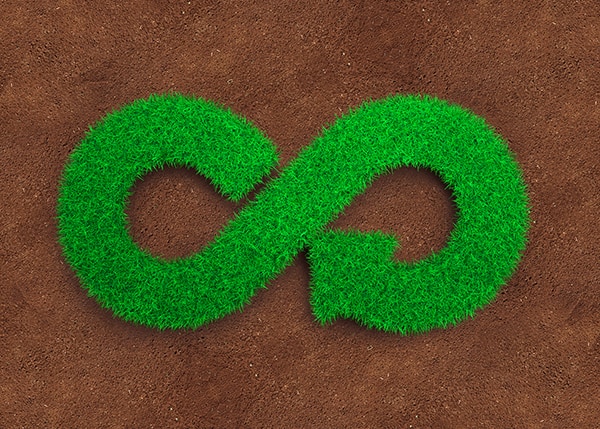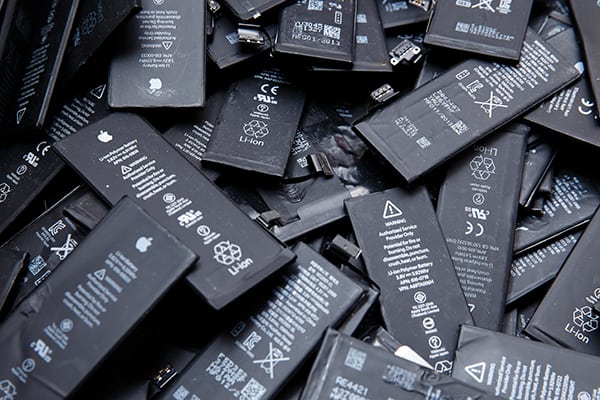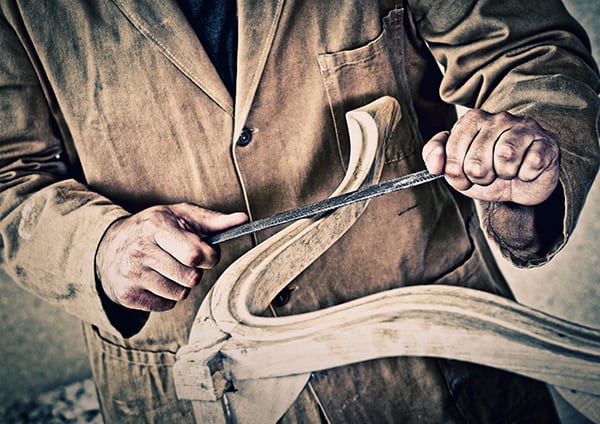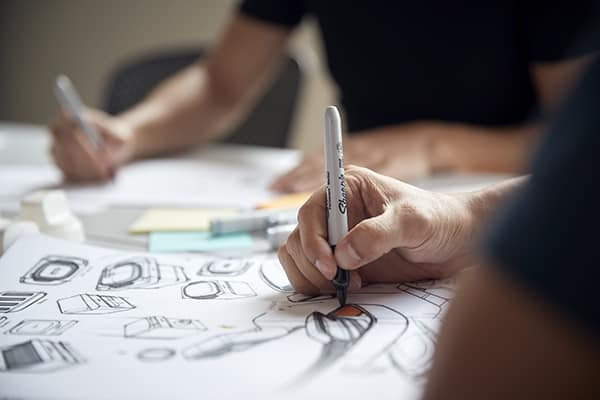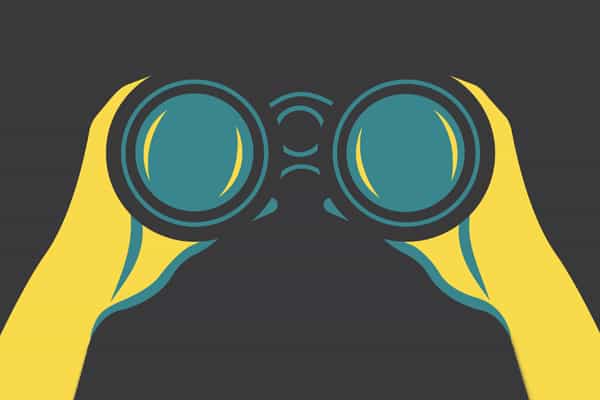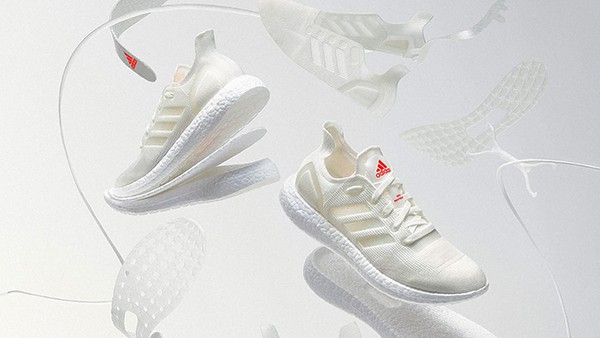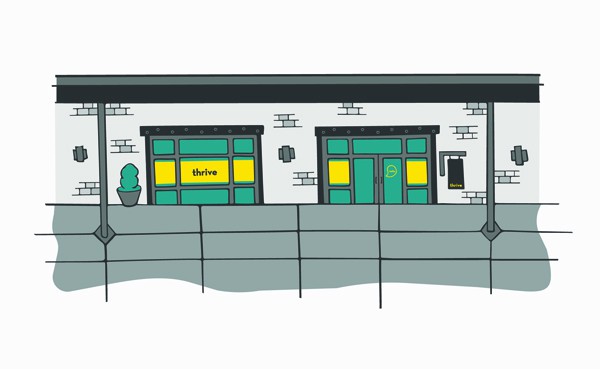The Future of Design in a Circular Economy.
Welcome to the Circular Economy, an economy where there is a growing urgency to reduce our environmental impact and keep resources in use for as long as possible. The old way of thinking about how we design everyday objects — make, use, dispose of — is being challenged with a growing emphasis on redefining growth, and focusing on positive society-wide benefits. Our challenge — and the real innovation opportunity for businesses — lies in informing and influencing the public’s ability to take more environmentally responsible actions, and making it as easy as possible for them to reinput product materials into the greater system of things.
The average American keeps the same cell phone for 32 months; 35 percent of prepaid smartphone users don’t go more than two years before trading in their mobile device for a shiny, new version. It’s not an insignificant amount of turnover, especially when you consider more than 250 million people in the U.S. own one (not to mention the other billions of smartphone users across the globe). Recognizing this behavior, smartphone makers, like Apple and carriers, like AT&T, have designed services to support society’s upgrade patterns surrounding cell phone life cycles. You can trade-in your current phone for credit towards a new one or turn it in to be recycled.
It’s an example of the circular economy in action — one where, rather than the traditional production and consumption model, the entire journey of a product is orchestrated from the cradle to the grave. Or even cradle-to-cradle.
THE FUNDAMENTAL SHIFT: Supporting the Full Product Life Cycle
The old way of thinking about and designing the things we use every day has been very product-orientated: you create something, a transaction occurs, and someone takes ownership of it. That’s where the thought process stopped. Think about furniture and the oft-used phrase, “they don’t make things like they used to.” Old handcrafted furniture was built to last. The design intent from the outset was to make an object that could be passed down in a family from generation to generation. Designers never had to consider what might happen to that object one day if it was no longer in use — and didn’t need to — longevity was a given. Cut to now, when commodity and ubiquitous quick-fix furniture solutions check the box for “need-it-now” style and function, understanding the product may only have a lifecycle of a couple of years. You don’t expect to hand your IKEA FYRKANTIG sofa down to your children.
So, if what we’re creating doesn’t have permanent ownership, there is an impetus for designers to look more holistically at a product’s use over time and consider what comes next. That means addressing the consumer experience and the product’s likely lifespan, then making it as easy as possible for the user to reinput that material into the greater system of things, whether it’s being upcycled or repurposed. The idea is to try to mitigate as much waste as possible, and to give people the tools they need to complete the product’s life cycle with as little effort as possible. We should design to make the whole cyclical life of a product as frictionless as possible, repurposing a product should be as effortless as it is to purchase it. We want consumers to think, why would I do it any other way? Why would I dispose of this thing on my own, when it’s easier to send it in to be recycled? The designers’ task is to make it simple, to be sustainable and contribute to the circular economy through design.
THE DESIGNERS’ IMPERATIVE: It’s Our Responsibility to Do Better
Thinking about the higher calling of how much impact designers can have, our challenge is to inform and influence the public’s ability to take more environmentally responsible actions. That means we can’t get lazy in the execution of our designs; we have a responsibility to think about the future.
So, as a designer, you should ask yourself:
• Am I thinking about designing for longevity or value beyond the initial consumption?
• Can I give something a second life by design?
• Am I making it easy for purchasers to reinput a product’s material into the greater system of things, whether it’s being upcycled, repurposed, or recycled?
• Is there a different way to design this part or component, so I’m using more responsible/renewable/reusable materials from the outset?
•As a designer, what can I do to help my world become more sustainable?
•Am I contributing to the solution or the problem?
THE LONG-TERM VIEW: Look Beyond Quick Wins for Sustainable Success
Here’s the thing: Eventually, people will come to understand the urgency in reducing our environmental impact, and at some point, they will stop buying products that aren’t sustainably designed and don’t support the circular economy. It’s coming; you mark our words. Today, not everyone self-selects the better, more environmentally friendly, and sustainable option because of convenience, price, habit, and a lack of awareness or understanding. The more in-depth story is that the raw materials used in a finished product are one-step removed from the consumer, and therefore out of mind. Even when we see news reports on environmental destruction and terrifying statistics on climate change, it can still be hard to understand and fully grasp the immediate effects of our actions. But recent data is illuminating an increasing sense of urgency, and at some point, survival will kick in. Out of necessity, consumers will begin to choose sustainable products and designs that deliver on the cradle-to-cradle model.
The bottom line: In this emerging non-sustainable product rapture, you do not want to be left behind.
The future innovation opportunity for business goes beyond the exploration of alternative materials and manufacturing processes to realizing products as a piece of infrastructure empowering and driving the circular economy.
Providing seamless and integrated services to aid customers in the recycling and reuse of products not only supports the entire product life cycle but creates longer-term, sustained relationships with consumers. Adidas Futurecraft Loop sneakers are constructed using a single material; they are 100% recyclable and, once worn out, can be sent back to Adidas to be ground up, melted, and used to create new shoes. There’s still work to be done in perfecting the retail model, but it’s a significant step towards reaching zero-waste circularity. And that’s our call to action: take a step. Start moving in a positive direction. And as long as you’re moving toward that, you’re at least trying. And in trying, you’re reducing at least some of the waste you might have otherwise produced.
In Design Thinking, there’s a well-known Venn diagram for positioning experiences with circles representing the inputs for innovation: desirability (customer need), feasibility (the technology part) and viability (the business case). But for design in today’s emerging economy, there is an added circle to consider, one that should envelop the rest — sustainability — design for a circular economy. At THRIVE, that big circle is a vital part of how we partner with businesses. Our work goes beyond just helping you design a thing; we also help identify how a product should be manufactured long with the creation of a service component that helps support the product. Helping to create a circular economy is our responsibility as designers, and here at THRIVE, we embrace it as one of our design imperatives.
Contact us today to talk about our growth and innovation strategy expertise. Find out how we can help make sure you’re considering your products holistically, from idea to creation to achieve a restorative and regenerative design.

